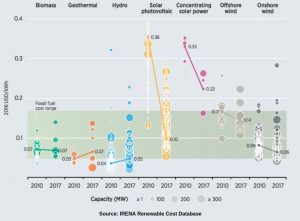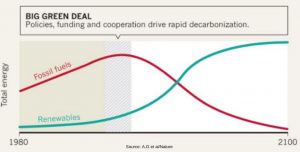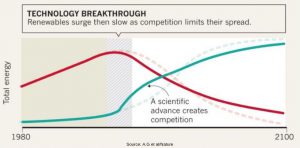
The Future of Renewable Energy
For over fifty years, fossil fuels have been considered the best source to generate energy. In fact, fossil fuels have always been associated with resources labelled as cheap, available and reliable.
Over time, awareness of the negative consequences of fossil fuels started spreading. Among others, the main cons include:
- Greenhouse gas emissions (including CO2)
- Difficulty in finding oil and gas deposits
- Environment damage – with possible catastrophic consequences from large oil spills
- Production of smog that harms human health
The increased awareness of the negative consequences of substances such as oil and gas enhanced a global movement aimed at stopping the use of these resources, replacing them with renewable energies, such as solar photovoltaic (PV) energy.
Initially, renewable energies were not easily adopted due to their very high costs. Fortunately, recent studies show that this setup is changing and the costs associated with renewable energies are now steadily decreasing. Recent forecasts also state that in the near future, renewable energy will now become the cheapest option available.
Research conducted in 2017 by the International Renewable Energy Agency (IRENA), studied the trends in cost of renewable power generation, compared to the cost of fossil fuels.
Interestingly, findings show that solar and wind technologies had a steady cost decline compared to the previous years.
The fall in electricity cost for solar photovoltaic (PV) projects since 2010 has been remarkable. As shown in the image below, the global average cost of electricity of solar PV has fallen 73% since 2010, reaching USD 0.10/kWh in 2017. After years of steady cost decline, renewable power technologies are becoming an increasingly competitive way to meet new generation needs. This technology is competing head-to-head with conventional power sources – and doing so without financial support.

With lower costs, recognition will be given to innovations that unlock efficiencies in manufacturing, reduce installed costs or improve performance for power-generation equipment.
The low auction prices for renewable power reflect a constant set of key competitiveness factors. These include:
- A favourable regulatory and institutional framework
- Low off-take and country risks
- A strong, local civil engineering base
- Favourable taxation regimes
- Low project development costs
- Excellent resources
The analysis predicts that electricity from renewable sources will soon be consistently cheaper than from fossil fuels. The reason behind this is that the costs associated with the technologies that generate renewable energy are expected to get lower than the costs associated with fossil fuels by 2020.
Another study published by the science journal ‘Nature’ and the ‘World Economic Forum’, shows that there are two scenarios likely to occur that will see fossil fuels becoming more expensive than renewable energy.
In the first scenario called ‘Big Green Deal’, policies funding and cooperation will drive rapid decarbonisation. A ‘Green Climate Fund’ will move fossil fuels to low carbon alternatives and see green companies dominate by 2030.

In the second scenario, political tensions will split the world in two in a so called ‘clean-tech cold war’ after a ‘Technological Breakthrough’. Competition between nations spikes in the race for renewables, which does mitigate climate change and displace fossil fuels.

This research presages the lowest costs yet seen for modular technologies, and forecast a transition to a greener world which is great news for everyone.